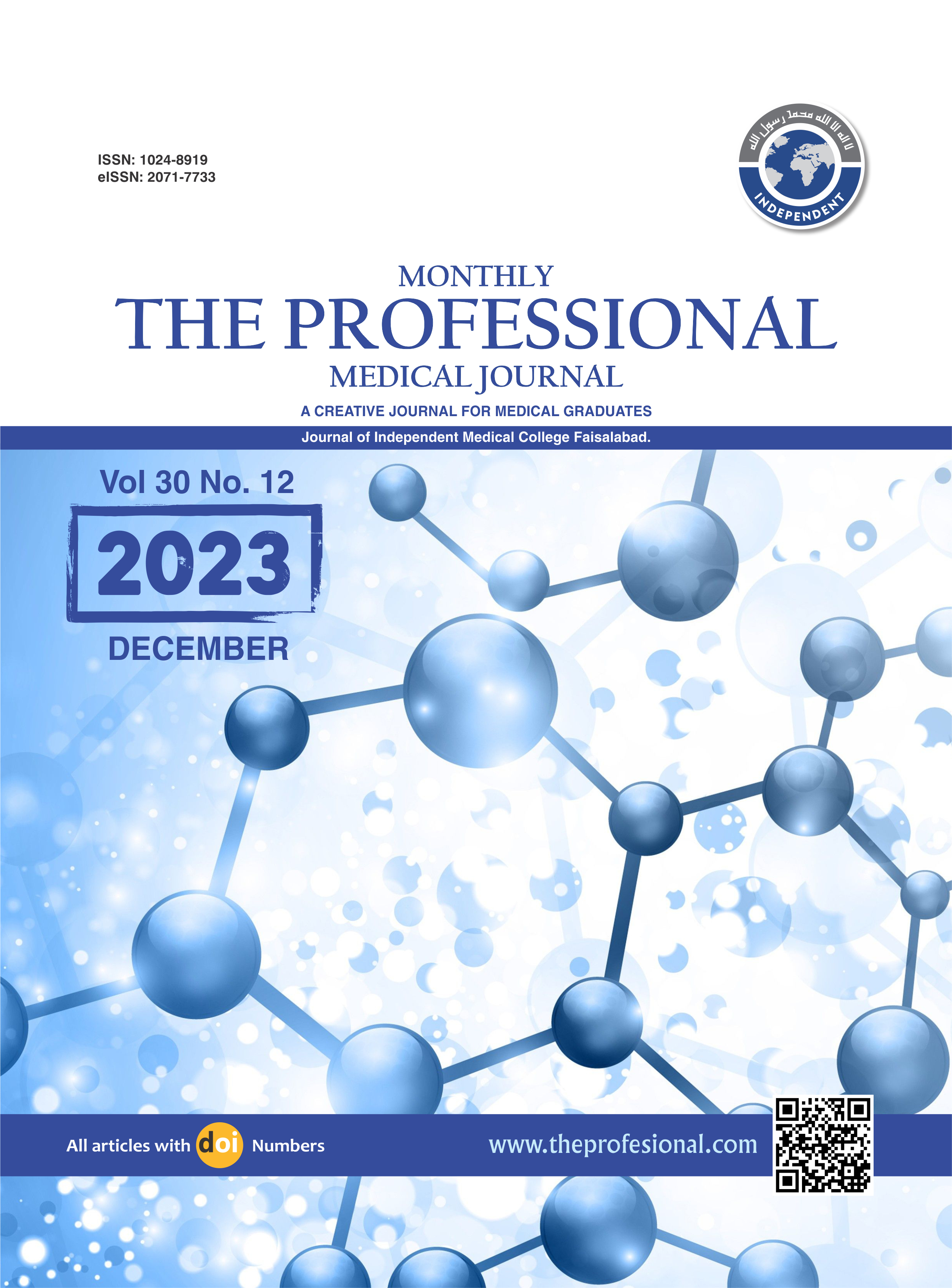Frequency of hearing loss in children with cerebral palsy and parents’ perception regarding their child’s hearing.
DOI:
https://doi.org/10.29309/TPMJ/2023.30.12.7788Keywords:
Brain Evoked Response Auditory, Brainstem Auditory Evoked Potential, Cerebral Palsy, Hearing Loss, Parental PerceptionAbstract
Objective: To determine frequency of hearing loss in cerebral palsy (CP) children and perception of child’s hearing and brain evoked response auditory (BERA) / brainstem auditory evoked potential (BAEP) results in CP patients. Study Design: Cross-sectional study. Setting: Department of Pediatric Neurology, Liaquat National Hospital, Karachi. Period: January 2022 to December 2022. Material & Methods: The parents of all the CP children having cerebral palsy and who were nor assessed for hearing screening at birth (newborn hearing screening) were included. In child neurology clinic, parents were interviewed for the perception of the hearing of the child. Parental perception, CP type and the BERA results were recorded. Results: Total 102 patients were studied with median age of 27.9 (IQR= 17 – 48) months. Majority of the patients were normally delivered (n=59, 57.8%). Nearly quarter of them underwent neonatal screening (n=22, 21.6%). Majority of mothers (n=85, 83.3%) and father (n=80, 78.4%) had perception of hearing. BERA test was normal for 44 (43.1%) children. Age was significantly higher among patients with abnormal results. Frequency mothers’ perception of normal hearing was higher in abnormal BERA result. Frequency of difficult speech was higher in patients with abnormal BERA results. Conclusion: The frequency of hearing loss was high among children with CP. Frequency of mothers’ perception of their CP child’s normal hearing was higher when compared to the father’s perception.
Downloads
Published
Issue
Section
License
Copyright (c) 2023 The Professional Medical Journal

This work is licensed under a Creative Commons Attribution-NonCommercial 4.0 International License.


